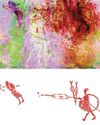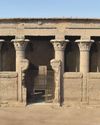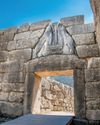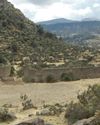
ONE OF EGYPT’S GREAT VISTAS, says archaeologist Miroslav Bárta, is the view from the top of the pyramid of the 5th Dynasty pharaoh Neferirkare in the necropolis of Abusir. On a clear day, you can see all the iconic monuments of Egypt’s Old Kingdom from there. Ten miles to the north are the Great Pyramids of Giza. To the south rise the Bent Pyramid at Dashur and the great pyramid complex of Djoser in the nearby necropolis of Saqqara. This majestic tableau on the Nile’s west bank is the most visible legacy of the Old Kingdom pharaohs of the 3rd through 6th Dynasties, who reigned from about 2649 to 2150 B.C. and were celebrated throughout Egyptian history. The monarchs of the 3rd and 4th Dynasties oversaw the creation of the country’s most massive pyramids and loomed large in the Egyptian historical imagination. But Bárta, head of the Czech Institute of Egyptology’s Abusir Mission, says that the true legacy of the Old Kingdom lies in the momentous social changes that occurred during the reign of the 5th Dynasty pharaohs. Their relatively modest pyramids in the necropolis of Abusir may be somewhat overlooked by tour groups today, but the discoveries made by Czech teams there since the 1960s have shown how radical changes instituted during the 5th Dynasty irrevocably impacted the trajectory of Egyptian history. “Abusir tells the story of a time when Egypt changed utterly,” says Bárta.
This story is from the November/December 2020 edition of Archaeology.
Start your 7-day Magzter GOLD free trial to access thousands of curated premium stories, and 8,500+ magazines and newspapers.
Already a subscriber ? Sign In
This story is from the November/December 2020 edition of Archaeology.
Start your 7-day Magzter GOLD free trial to access thousands of curated premium stories, and 8,500+ magazines and newspapers.
Already a subscriber? Sign In

A Very Close Encounter
New research has shown that human figures painted in red on a rock art panel in central Montana depict individuals engaged in a life-or-death encounter during an especially fraught historical moment.

A Sword for the Ages
A zigzag pattern, now tinged with the green-blue patina of oxidized metal, adorns the octagonal hilt of a rare sword dating to the Middle Bronze Age in Germany (1600-1200 B.C.) that was recently excavated in the Bavarian town of Nördlingen.

Ancient Egyptian Astrology
For centuries, layers of soot have coated the ceilings and columns in the entrance hall of Egypt's Temple of Esna. Now, an Egyptian-German team of researchers, led by Hisham El-Leithy of the Egyptian Ministry of Tourism and Antiquities and Christian Leitz of the University of Tübingen, is restoring the temple's vibrant painted reliefs to their original brilliance.

BRONZE AGE POWER PLAYERS
How Hittite kings forged diplomatic ties with a shadowy Greek city-state

RITES OF REBELLION
Archaeologists unearth evidence of a 500-year-old resistance movement high in the Andes

Secrets of Egypt's Golden Boy
CT scans offer researchers a virtual look deep inside a mummy's coffin

When Lions Were King
Across the ancient world, people adopted the big cats as sacred symbols of power and protection

UKRAINE'S LOST CAPITAL
In 1708, Peter the Great destroyed Baturyn, a bastion of Cossack independence and culture

LAPAKAHI VILLAGE, HAWAII
Standing beside a cove on the northwest coast of the island of Hawaii, the fishing village of Lapakahi, which is surrounded by black lava stone walls, was once home to generations of fishers and farmers known throughout the archipelago for their mastery of la'au lapa'au, or the practice of traditional Hawaiian medicine. \"

A MORE COMFORTABLE RIDE
Although the date is much debated, most scholars believe people 5,000 years ago. For thousands of years after that, they did so without saddles. \"In comparison with horse riding, the development of saddles began relatively late, when riders began to care more about comfort and safety in addition to the horse's health,\" says University of Zurich archaeologist Patrick Wertmann.